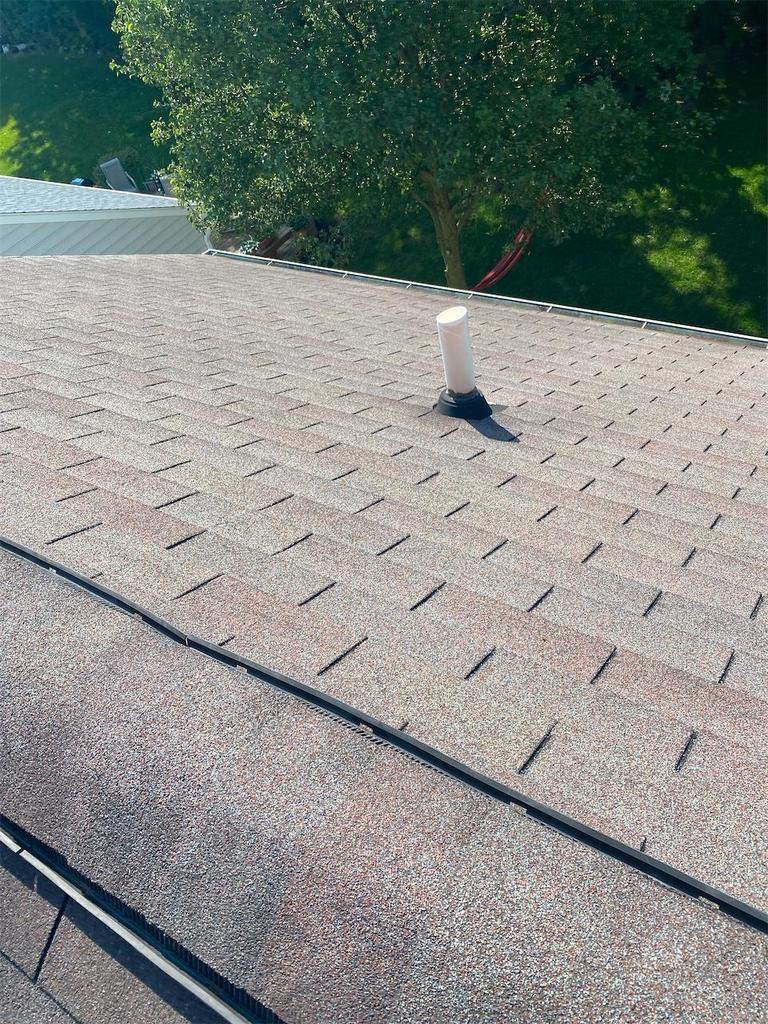
Roof vents are a necessary component in any roofing system, and they come in a variety of styles. If you’re looking to purchase new roof vents, this blog post will give you all the information that you need! We’ve included seven different types so that you can make an informed decision on what type is best for your needs. Whether it’s metal or PVC, we have something for everyone. The seven types of roof vents we will look at today are ridge vents, off ridge vents, box vents, hard powered attic vents, solar powered attic vents, roof turbines, and cupola vents. When its time for a new vent for your house contact Cap City Restoration. We are your local expert in Columbus Ohio offering free estimates.
The most common type of vent is a ridge vent, which is a long roof vent that sits on the top of your home and runs down one side to deliver air. It’s an ideal choice for older homes with sloped roofs because it doesn’t require any modification to the roofing material, but can be less efficient than other types if you live in a windy climate or have lots of trees around your house blocking up airflow. One of the most prevalent sites on a rooftop, ridge vents tend to be available in many different shapes and sizes, with a number of diverse benefits.
The second type vent is an off ridge vent, which are much shorter and sit off the roof. These vents work well in windy climates but can be more expensive because they require a support structure to hold them up.Ventilation systems for homes with many dormers require a specific model of roof vent. Off ridge vent is a good option in these situations.
The third type we will look at are box vents also known as louver vents, which are roof vents that sit on the roof with a rectangular or square shape. Boxes work well in areas where there’s plenty of wind because they can act like an air scoop to capture more airflow and have less chance of blowing off your roof from strong gusts.
Next we will look at hard wired power attic vents, which are roof vents that have a fan in them to pull air out of the attic. These types work well because they help reduce moisture build up, but can be more expensive than other vent options and require professional installation. They work much like a box fan placed in a window on a hot summer day. They can effectively pull the hot air out, but come with a tradeoff of higher electricity costs.
Solar powered attic vents are roof vents that are connected to a solar panel. They work by using the energy from the sun and converting it into power for their fan which then pulls air out of your attic space. Solar powered attic ventilation is an energy efficient way to remove over 90% of the electricity costs associated with older vents. While solar power does not eliminate the negatives, like noise, that come with all attic vents it remains a good investment for those looking to save money on their electric bill.
Another type of vent are roof turbines. These vents work by using a turbine that is connected to an electrical box. When the wind blows, it will rotate and generate power for your household which can be used at any point in time. Roof turbines need winds of at least 5 to 6 miles per hour to activate and spin the interior blades so most roofs will need multiple roof turbines to keep up.
The last type of roof vents we will look at are cupola vents. These are the most decorative of roof vents and come in a wide variety of shapes, colors, and materials to match any home’s architecture or design. They also have an internal fan that can be activated by pulling down on the lever at the top which will push air out through louvers below it. Cupola vents work best when they are installed in pairs with one vent blowing hot air up into your attic while another cupola vent is located just outside releasing cooler air back onto your roof so you get a continual cycle as needed for optimum cooling throughout your attic space.”
The roof vent is an important part of your home’s ventilation system. They are great for maintaining the temperature inside your house, which can be a challenge in warmer climates where heat rises and builds up on the top floor. This blog focused on 7 different types of vents – all of which were designed to meet certain needs based on factors such as climate considerations or aesthetics. If you’re thinking about getting a new roof vent now that summer has arrived, make sure you take our guide into consideration before making any decisions! Contact us at Cap City Restoration today for you free estimate or for any further question.

